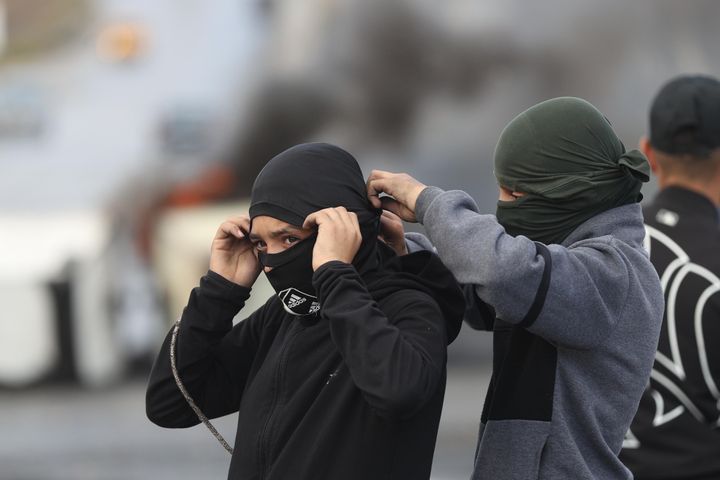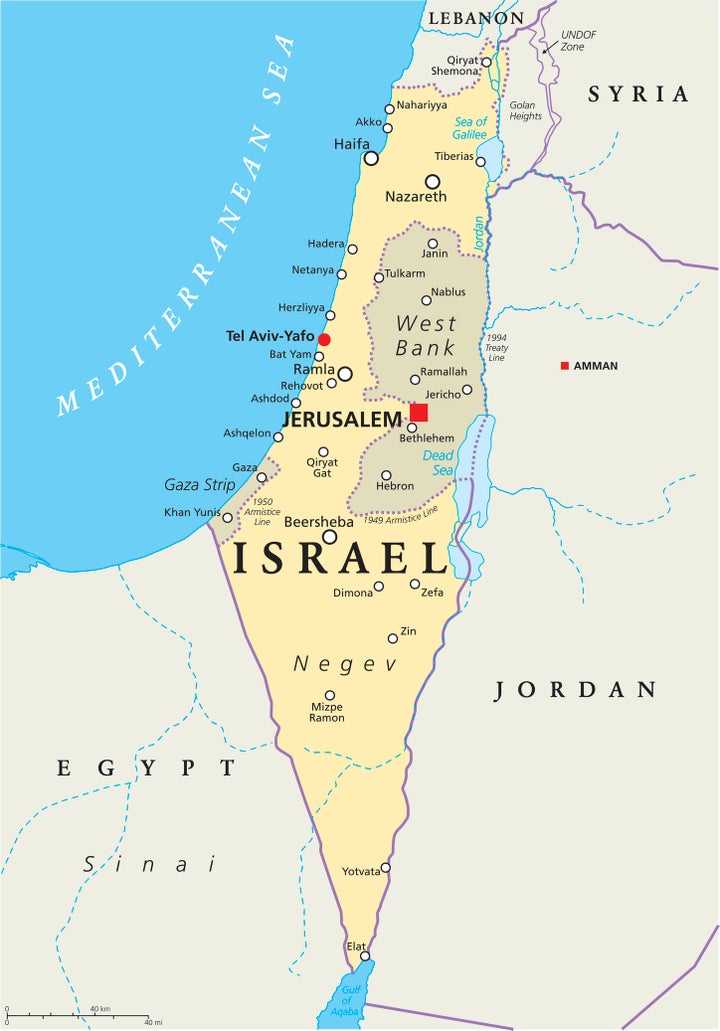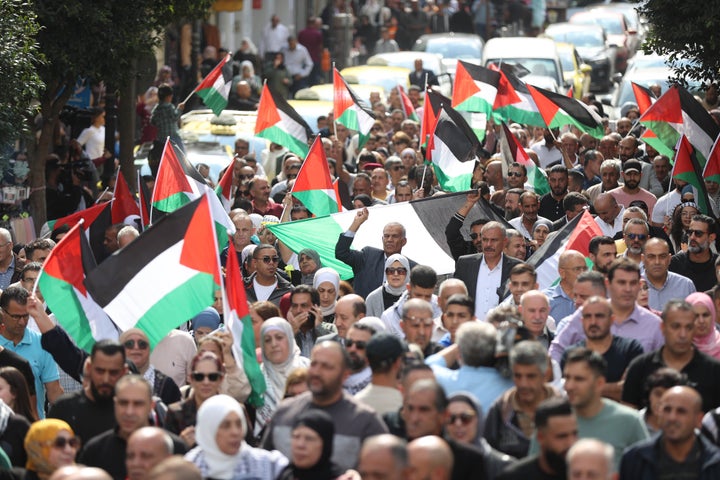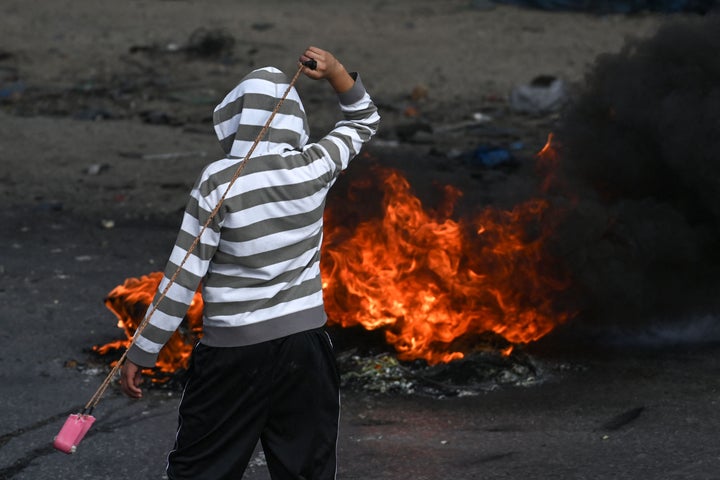
As the war between Israel and Hamas shows no signs of abating, what does this mean for the other Palestinian territory, the West Bank?
An Israeli air strike hit Jenin, in the north of occupied West Bank, on Sunday, after Tel Aviv claimed Hamas had set up a “terrorist compound” under a mosque there.
Palestine said two people died in the strike. Reports from the Israeli media claimed, if the attack was confirmed, that would be the only time in roughly 20 years that a fighter jet had hit a target in the West Bank.
This is significant because Hamas do not rule the West Bank – suggesting the war between the militants and Israel in Gaza is spreading.
While the Palestinian militants were voted into office in the Gaza Strip, they only operate in an underground capacity in the West Bank, as the area is controlled by another rival group.
Palestinians may be facing a different set of circumstances to those in the Gaza Strip – which is under Israeli siege – right now, but ripples from the war are still being felt throughout the territory.
Here’s what you need to know.
Where is the West Bank and who lives there?
On the west of the River Jordan, and surrounded by Israel to the north, west and south – and Jordan to the east – this territory has a population of around three million, including approximately 500,000 Jewish settlers.
Most of the international community believe the Jewish settlements are illegal under international law, but they’ve been growing in number around the West Bank for decades.

Why are the West Bank and Gaza separated?
Despite being the only two Palestinian territories, the only way to go from one to the other is travel through Israeli land, as you can see from the map above.
It’s pretty complicated, so here’s a brief (and heavily simplified) summary of what happened.
As the British forces withdrew from Palestine in 1948, the Jewish population formally declared the formation of the state of Israel. In response, the armies of five Arab countries entered Palestine.
Israel pushed back, and ended up expanding beyond the territory announced by the UN’s partition plan for the area, which was meant to divide the land into a Jewish state, and Arab state, and Jerusalem as a separate entity.
Jordan, which swept into Palestine from the east, formally annexed the West Bank in 1950 – though Palestinians wanted the land to form its own state.
Meanwhile, Egyptian forces entered Gaza and it became the headquarters of the Egyptian expeditionary force in Palestine. Heavy fighting saw the territory gradually reduced in size, with its boundaries finally confirmed in the Egyptian-Israeli armistice of 1949.
Israel then occupied the West Bank in 1967, and set up a military presence there. It incorporated East Jerusalem into its own land.
Israel was keen to keep hold of the land because of the number of Israeli settlements. Jordan only renounced administrative responsibility for the West Bank in 1988.
By the early 80s, the number of Israeli settlements in the West Bank started to climb, under the claim of the right to administer land in the the West Bank that was not cultivated or privately owned, according to Britannica.
Israel agreed to extend self-government to the West Bank Palestinians over a five year period. By 2000, Palestinians controlled less than one fifth of the area – Israel controlled the rest.
Israel also occupied Gaza in 1967, too.
It only began a phased transfer of government authority to the Palestinian Authority in Gaza in the 90s, and fully pulled out in 2005.

Who controls the West Bank now?
The Palestinians in the West Bank live under limited self-rule and Israeli military rule today.
In 2006 parliamentary elections, the Palestinian group Fatah lost to Hamas, amid claims that it was corrupt.
Meanwhile, when Israel withdrew from Gaza in 2005, Hamas became the de facto authority, then winning a majority of seats in its legislature.
But when violence in the Hamas-controlled Gaza soon escalated, the Palestinian Authority president Mahmoud Abbas dissolved the Hamas-led government in the West Bank.
Fatah was installed as the dominant force in an emergency cabinet – while over in Gaza, Hamas removed all Fatah officials.
Other nations started to provide economic and diplomatic support for the Fatah-run West Bank, while boycotting Hamas’ Gaza.
That’s why Hamas is believed to only operate underground in the West Bank.
Even so, violence in the West Bank is growing. The Israel Defence Forces started to raid the West Bank following a spate of attacks only last year.
What is the relationship between West Bank and Gaza?
They were supposed to be seen as a “single territorial unit” under the Oslo Accords agreement, a deal between Israel and the Palestine Liberation Organisation (PLO) – an umbrella organisation which includes Fatah – signed on September 13, 1993.
That’s not really what has happened in practice. Hamas condemned this self-government pact which aimed to establish a two-state solution by 1999, further deepening the divide between the territories.
A June 2023 poll from Palestinian Centre for Policy and Survey Research showed that a third of Palestinians consider the split between each territory the most damaging development for their people since the 1967 occupation.

How is the West Bank being affected by the war?
Violence has been increasing steadily in the West Bank in the days since Israel declared war on Hamas.
Israel is believed to have launched its first air strike in 20 years on the territory over the weekend, allegedly targeting a “terrorist company”.
Israeli forces have been keeping more of a watchful eye on the West Bank, closing crossings into the land and checkpoints between cities. Israel claims this is meant to prevent attacks.
According to the Associated Press, Israel’s National Security Minister gave more weapons to the already well-armed settlers in the West Bank – with 10,000 firearms, protective vests and helmets going to Jewish settlers, particularly in the West Bank.
“We will change the world so that the settlements will be protected,” he said. “I have ordered the massive arming of the civilian standby units in order to protect the settlements and the cities.”
Associated Press also reported on October 14 that 55 Palestinians had been killed over clashes with Israeli troops, arrest raids and attacks by Jewish settlers.
According to the Palestinian Ministry of Health in the West Bank, by Thursday 19 October, at least 61 people – including children – had been killed in occupied West Bank, while more than 1,250 people have been injured.
The Palestinian Authority claimed by Sunday, October 22, that 89 Palestinians had died in total so far in the territory.
CNN reported that Israeli’s military spokesperson, Brigade General Daniel Hagari, said last week that the military was on high alert in the West Bank since the war began in Gaza.
“Anyone who challenges us in Judea and Samaria will be met with huge force,” Hagari said, using the Jewish biblical names for the West Bank.
IDF also claimed those killed in the West Bank are usually terror suspects, or people engaging violently with its troops.
A video circulated online showing a settler shooting a Palestinian point blank in the southern West Bank. AP also pointed to funeral attacks, further shootings, and Palestinians relocating due to rising threats, and noted Israel had not responded to comment requests.
But even before the war, violence had been brewing.
The UN noted 1,100 Palestinians had been displaced by settler violence over the last year – an unprecedented amount.
And in the first six days after Hamas’ attack, Israel’s military said it had arrested 220 people in raids across the West Bank – including 130 supposed Hamas operatives.
The UN monitors said it was the deadliest week for Palestinians in the West Bank since at least 2005.
